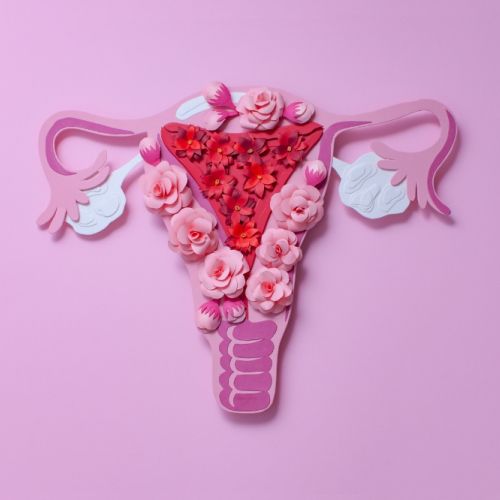Learn More About IVF and if It’s Right for You

Being unable to naturally and easily conceive a child so you can start the family you’ve always wanted is a painful and often complicated experience. There is a lot of trying, a lot of dead ends, and a feeling that your situation is unfair. And that’s just for heterosexual couples. LGBTQ couples face their own challenges when pursuing their desire of having a biological child. The good news is medical advancements have come such a long way that more and more couples (and individuals) are finding that there are options available to them that can help during this difficult process. Many of the conditions that make conception difficult can be circumvented with the right kind of fertility treatment.
Because there are entire clinics dedicated to fertility and there are so many treatments offered, it can be dizzying trying to figure out what procedure would be best for you. The short answer is only a doctor can tell you that, though you can do research on your own. Only a doctor can give you the full evaluation required to determine where in the process you are having your difficulty and what treatment course would be right for your situation. However, supplying yourself with the facts is helpful and that’s why you should learn more about the most popular fertility treatment that has been refined and used for years: in vitro fertilization.
What does the process look like?
When you visit a fertility center and it is determined by your doctor that in vitro fertilization is for you, you should expect a multi-step process that takes some time to complete. What essentially happens is the natural process of conception gets bypassed via the laboratory in order to avoid some of the common medical reasons in the process where there could be difficulty or complications.
Once the treatment begins, there will be a period of the woman taking hormones so that there is a stimulation effect in her ovaries. The goal during this initial part of the treatment is to encourage the ovaries to produce several eggs. This part generally takes about a week with nine days being the expectation. A simple outpatient procedure will be performed next that will remove the mature eggs from the woman for the next phase. Twilight anesthesia will be administered for this.
The actual fertilization takes place in the laboratory. Sperm from the woman’s partner or a donor is mixed with the eggs until a successful incubation occurs. With this new viable embryo ready, another procedure will take place where it is placed directly into the uterus so it can attach to the uterine walls and begin the process of a regular pregnancy.
Why is it used?
In vitro fertilization in combination with embryo transfer is the most commonly used fertility treatment for couples experiencing difficulty conceiving and for same sex couples. There are numerous complications that IVF is used to circumvent. Some of the common reasons that effect many women, especially in their 30s and 40s, include endometriosis, uterine fibroids, and premature ovarian failure. There are also issues related to the male that IVF is used to circumvent, particularly impaired sperm function. If this is determined to be the reason, the male will certainly want to investigate the cause of this further to eliminate the possibility of underlying health issues.
In the instance of a same sex couple trying to have a biological child, the reason for opting for IVF is rather obvious. The combination of donors and gestational surrogates will obviously be different depending on each individual scenario, but it’s the most clear and effective way to ensure a pregnancy occurs using the genetics of one of the biological parents.
What to expect
When it comes to medical care, and fertility treatments in particular, it’s important to be realistic and to temper one’s expectations. There are no guarantees, though technology has advanced to such a degree that success rates are always increasing. For now, in vitro fertilization has about a 40% success rate per-cycle. However, it’s important to keep in mind that in relative terms, the success rate is high when you consider there is only about a 15-20% chance of naturally conceiving during a month for the typical young and fertile couple. Don’t let percentages dissuade you. IVF is your best chance if a medical condition is currently leaving you unable to naturally conceive.
Conclusion
If you have been having difficulty conceiving or you’re ready to start a family and need help, it’s time to speak with a medical professional that specializes in fertility issues. Contact us today. Dr. Eliran Mor and the team at California Center for Reproductive Health is here to help you through the entire process with courtesy and professionalism. Get help finding your happiness today.
Eliran Mor, MD
Reproductive Endocrinologist located in Encino, Valencia & West Hollywood, CA
FAQ
What does a reproductive endocrinologist and infertility specialist do?
Reproductive endocrinology and Infertility is a sub-specialty of Obstetrics and Gynecology. In addition to managing medical and surgical treatment of disorders of the female reproductive tract, reproductive endocrinologist and infertility (REI) specialists undergo additional years of training to provide fertility treatments using assisted reproductive technology (ART) such as in vitro fertilization.
Reproductive endocrinologists receive board certification by the American Board of Obstetrics and Gynecology in both Obstetrics and Gynecology and Reproductive Endocrinology and Infertility.
When should I see an REI specialist?
In general, patients should consider consulting with an REI specialist after one year of trying unsuccessfully to achieve pregnancy. The chance of conceiving every month is around 20%, therefore after a full year of trying approximately 15% of couples will still not have achieved a pregnancy.
However, if a woman is over the age of 35 it would be reasonable to see a fertility specialist earlier, typically after 6 months of trying.
Other candidates to seek earlier treatment are women who have irregular menses, endometriosis, fibroids, polycystic ovary syndrome (PCOS), women who have had 2 or more miscarriages, or problems with the fallopian tubes (prior ectopic pregnancy).
What are the reasons we are having trouble conceiving?
Approximately 1/3 of the time cause for infertility is a female factor, 1/3 of the time a male factor, and the remaining 1/3 a couples’ factor.
At CCRH, we emphasize the importance of establishing a correct diagnosis. Both partners undergo a comprehensive evaluation including a medical history and physical exam.
Furthremore, the woman’s ovarian reserve is assessed with a pelvic ultrasound and a hormonal profile. A hysterosalpingogram (HSG) will confirm fallopian tube patency and the uterine cavity is free of intracavitary lesions. A semen analysis is also obtained to evaluate for concentration, motility, and morphology of the sperm.
Additional work up is then individualized to direct the best possible treatment option for each couple.
What is IVF? What is the process like?
In vitro fertilization (IVF) is the process that involves fertilization of an egg outside of a woman’s body.
The process starts with fertility drugs prescribed to help stimulate egg development. In your natural cycle, your body is only able to grow one dominant egg, but with stimulation medication we can recruit multiple eggs to continue to grow. After about 8-10 days of stimulation, the eggs are surgically retrieved and then fertilized with sperm in a specialized laboratory. Fertilized eggs are then cultured under a strictly controlled environment within specialized incubators in the IVF laboratory for 3-5 days while they develop as embryos. Finally, embryos (or an embryo) are transferred into the uterine cavity for implantation.
Should I have IVF?
Before deciding if IVF is the right choice, it’s important to sit down with an REI specialist to discuss available treatment options. For some people, other methods such as fertility drugs, intrauterine insemination (IUI) may be the best first choice treatment. At CCRH, we believe each individual couple is unique and not everyone needs IVF.
Is the IVF procedure painful?
While not painful, the fertility medications may some side effects including headaches, hot flashes, mood swings, and bloating. The injection sites may also bruise.
Will IVF guarantee a baby?
Unfortunately, no. Many people think once they start IVF it’s a matter of time that they will be pregnant and have a baby. But according to national statistics per the Society of Assisted Reproduction (SART), on average 40% of assisted reproduction cycles achieve live births in women under age 35. The chances of success then continue to decrease with advancing age.
At CCRH, we employ only evidence-based interventions to ensure patient safety and optimal outcome. While we cannot guarantee a baby, we guarantee that you will receive the best, most advanced, personalized care to help you maximize your chance of a baby.
What is the success rate for IVF?
The average IVF success rate (success measured in live birth rate) using one’s own eggs begins to drop around age 35 and then rapidly after age 40. This is due to the decline in egg quantity and egg quality as a woman ages.
Our clinic’s success rate consistently beats the national average year after year.
Do insurance plans cover infertility treatment? How much does IVF cost?
Individual insurance plans often do not have any coverage for infertility treatments. If you have a group plan, you can call members services to see if they have coverage for infertility (including consultation/workup and IVF).
After your consultation with our REI specialist, one of our dedicated account managers with sit with you to go over the cost of treatment.




